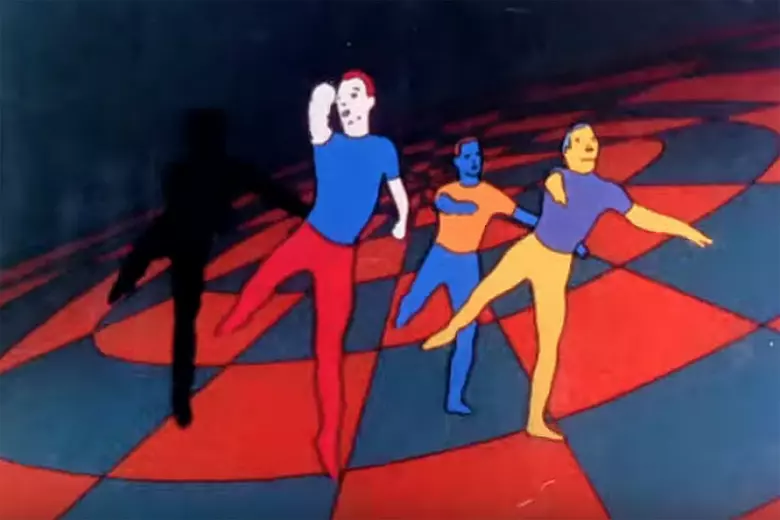
"You could argue that, of all rock bands, that Pink Floyd had the least need for visu­al accom­pa­ni­ment. Son­i­cal­ly rich and evoca­tive­ly struc­tured, their albums evolved to offer lis­ten­ing expe­ri­ences that verge on the cin­e­mat­ic in them­selves. Yet from fair­ly ear­ly in the Floy­d's his­to­ry, their artis­tic ambi­tions extend­ed to that which could not be heard. Can you real­ly under­stand their enter­prise, it's fair to ask, if you remain mere­ly one of their lis­ten­ers,"
"nev­er enter­ing the visu­al dimen­sion - not just their album cov­ers, repro­duc­tions of which still grace many a dorm room wall, but also their elab­o­rate stage shows, music videos (which they were mak­ing before that form had a name), and films? One man had more respon­si­bil­i­ty for the devel­op­ment of the Floy­d's visu­al style than any oth­er: Ian Emes. In 1972, Emes took it upon him­self to ani­mate their song "One of These Days" from the pre­vi­ous year's album Med­dle."
Pink Floyd built sonically rich, evocative albums that often functioned like cinematic listening experiences and simultaneously extended their artistry into visual media. The band incorporated album covers, elaborate stage shows, early music-video work, and films to create a multi-dimensional experience for audiences. Animator Ian Emes became central to that visual expansion after his 1972 animation "French Windows" attracted Rick Wright's attention and was used as projected imagery. Emes received further commissions for pieces tied to The Dark Side of the Moon and sustained a decades-long professional relationship, later directing animated sequences for large-scale Wall performances.
Read at Open Culture
Unable to calculate read time
Collection
[
|
...
]